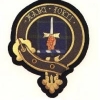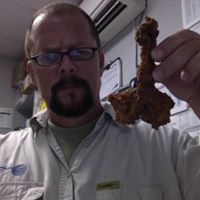Leaderboard
Popular Content
Showing content with the highest reputation on 12/08/2009 in all areas
-
2 points
-
I have been driving ambulances for some time now for paid 911, Volunteer 911 and CC transports. I am amazed at the never ending incorrect assumptions that we ambulance drivers make. To start off, nowhere have I found any law, regulation, ordinance or company policy that states, during my emergency response "REQUIRES" me to disobey the vehicle traffic law. For example I am not required to exceed the posted speed limit. I am not required to pass through a red traffic signal. Providing I am not disobeying any traffic regulation, I am not required to have an audible warning sound or siren consistently sounding from the time I put the vehicle in drive to the time I put the vehicle in park at the scene. If all this is true, and we know it is so dangerous, why do so many of us do it? and don't tell me its to get to the pt faster, I've been around that block...1 point
-
Greetings from the uncivilized part of the country. It was another one of those killer shifts. Three crews of 1 EMT and 1 medic each ran 37 calls in the first 24 of our 48. I finally got 5 hours of sleep at 9:30 the following morning when a supervisor called in a crew from the substation to get each of us some down time on the second day. The second half of the 48 was almost as bad. We went through 4 rotations after midnight. The angel of death rode with us this shift. I personally had 2 die on me, and one (details to follow) lived despite our efforts to kill him. This is the one that bothers me this morning, a full three days later, so as is my wont, I am writing to expunge it and appreciate comments from all. I had just returned from a call to the state prison, where a 25 year old inmate had shot himself up with a lot of heroin. CPR had been in progress. Long transport time, but this one is going to live. We get toned out for a gunshot wound in BF nowhere. This location is 40 minutes from our station down I-40, locale for desert rats and lean-tos. In this area, I have seen garbage piles that pass for residences, ran on patients with maggots infesting open wounds and 14 year olds beating up their grandmothers. Dispatch states “gunshot wound to the neck - the weapon has been secured.” That’s it - that’s all I get. We go enroute and I launch a rotor. 15 minutes into the run, I get an update from the BLS volunteer squad on the scene. There are a couple of new EMTs out there, which is a positive development because at least they still remember what they need to do, and are green enough to want to do it. I get “he’s got no nose, no tongue, and we can’t stop the bleeding.” I co-ordinate with DPS and BLS for landing the chopper, and it gets on scene about 10 minutes before I do. My EMT partner is tearing up the dirt road, he turns to me and says “I’m only doing this for you.” He knows I want to get there, and he is driving faster than he normally does. The dust from these dirt roads is infiltrating every nook and cranny in the cab and the patient compartment, and he is going to have hours of work to clean this thing up, if we ever get enough downtime to eat, let alone decon a rig. (Our “management”, 60 miles away, is based at a station that never runs on anything but pavement with half our call volume and 1 more rig, and writes us up when we turn over dirty rigs.) I get on scene. The flight crew has moved the patient on a gurney into the BLS rig. The patient is a 77 year old man. He is in tripod on the gurney. I see accessory muscle use, and labored breathing. There is a seeping clot where half his face used to be. I immediately flash to that infamous picture in the Brady Paramedic text of the patient with a shotgun blast to the face and whom my esteemed instructor referred to as the walrus. I also immediately recall his first rule of wing walking: “Never let go of one thing before getting a hold of something else.” This patient cannot be bagged because it’s pretty hard to get a seal on hamburger. I also figure that if I see no identifiable external landmarks, my odds of identifying internal landmarks are pretty slim. If it was my scene, I would hit the guy with some Versed and crice him. The flight crew is getting their RSI drugs ready. The flight crews around here are infamous for knocking down patients and then not being able to get tubes. I also note that there are no ACLS drugs in the rig (recall that it‘s a BLS rig). I turn around, go to my rig and get my drug box. On my way back, I note the patient’s son and granddaughter standing outside the rig. When I get back to the patient, they have given up on the tube and are cricing him. They get the tube in through a very nice hole in his throat and begin ventilations. The patient arrests. He is in a brady PEA. CPR begins and the flight RN is yelling at someone to get her ACLS drugs from the chopper. I draw up epi and pass it to her. As she is pushing that, I draw up the atropine. I hand that to her and she pushes it. I take over chest compressions. I get about 50 in and ask her to verify that she is getting a pulse with the compressions. She is. After about 2 minutes, we do a rhythm check. Patient has a pulse of 135 (um.. That would be the atropine) and a BP of 220/140 - um, that would be the epi. The Hs and Ts folks - when you cause hypoxia in a patient, if you correct that, you actually have a chance for ROSC from a brady PEA. I take over ventilations (and custody of the tube) from the flight medic. He is pumped because he just got his first field cric. My supervisor is on the scene. (He had come out in the supe vehicle) and he secures the tube. Does a fine job of it too. Patient is now stable. The EMTs and the flight medic begin organizing the move onto a spine board (why he wasn’t on it when they put him on the gurney is anybody’s guess). My supervisor grabs the yankauer and begins to suction the hole in the guys face. “leave that alone” I tell him - “it’s the clot”. He grins sheepishly and stops. A few minutes later, the RN picks up the suction and heads for the hole in the guy’s face. “leave that alone” I tell her - “it’s the clot”. Bottom line, the patient is loaded onto the chopper and off they go. They had debated taking him into Kingman and I chime in with “no - get him into definitive care in Vegas. That’s where he will need to be anyway”. They contact med control and get the OK to take the patient to Vegas. I am left on scene with my rig covered inside and out with dust, the BLS rig knee deep in trash and gore, and the patient’s family staring at me and my blood covered gloves, jacket and uniform. I remove the gloves and the jacket and go over to the family. “Is he gonna be OK?” I tell him the patient has done a lot of damage to himself. He wont’ be able to talk (no tongue), and I prepare them for the fact that he may lose one of his eyes and he has no nose. The son says “I wish I had known - if only… “ I stop him and say “It’s not your fault - there is nothing you could have done or not done.” The son collapses weeping into my arms. OK - so that’s the story. Now I’m going to tell you what had me up this morning thinking about it. This patient has shit for a life. He got to the point where he put a .38 under his chin and pulled the trigger. If he makes it, and I’m pretty sure he will, now he’s got shit for a life and no face. Tell me again why we do what we do. Thank you for listening.1 point
-
Something to keep in mind about LBBB. The GUSTO investigators (and subsequent studies of Sgarbossa's criteria) used elevated cardiac biomarkers as evidence of AMI. In other words, they combined STEMI and NSTEMI. That's why I think it's a mistake to suggest that Sgarbossa's criteria is an insenstive marker of acute STEMI if we accept that the ECG finding we call STEMI is a surrogate for an acute occlusive thrombus in an epicardial coronary artery. The criterion that has caused the most controversy is discordant ST-elevation > 5 mm. Even according to the original algorithm, this is only a score of 2 (probability of AMI 50%). That's because with LBBB the ST-T wave abnormality is proportional to the depth of the S-wave. A QRS complex that is 50 mm deep in lead V2 can have 5 mm of ST-elevation and the ST-elevation is only 10% the depth of the QRS complex, which is fine. A better approach is to say ST-elevation > 0.25 the QRS complex indicates acute STEMI (which was proposed by Smith et al. from Hennepin County Medical Center). The ECG provided shows a perfectly "normal" looking LBBB that does not satisfy any of Sgarbossa's criteria for AMI in the presence of LBBB. I would obtain serial ECGs and look for ST-T changes that suggest dynamic supply vs. demand characteristics. Absent that, there is no reason to transport this patient for primary PCI or give thrombolytic therapy. Tom1 point
-
I would argue that, in general, if you have the lights on you should have the sirens on regardless of if you are using an exemption to normal traffic laws or not. This isn't to say "always" (it's understandable with extremely light traffic conditions, late at night, etc to not have both on) have the siren on, however just the presence of the lights being on is going to change the driving environment and can cause other drivers to operate their vehicles differently.1 point
-
40 years of perpetuated misconception and Type A personalities who like to drive fast with flashy things going.1 point
-
Ok...so if anyone even cares anymore, I think I feel alright discussing some specifics. Maybe you can learn from my mistake. My medic, myself, and our driver (we run crews of three) got paged out in the wee hours of the morning to a premature birth, approximately seven months along, in full arrest. So...after I scooped the crap out of my pants, we responded to the scene. Sure enough, the smallest baby I have ever imagined. First responders are doing half-assed compressions. We cut the cord, bring the baby out to the rig, fire carries out mom. We begin our attempt at multi-tasking. Mom still hasn't delivered the placenta (but is fairly stable, minimal hemorrhage), so I'm trying to keep a close eye on her, while also trying to do compressions so my medic can attempt to intubate. We worked on this poor kid forever, we had the smallest stuff out of our broselow bag and everything was still too big. We were unable to intubate, unable to start an umbilical IV, and when we attempted an eazy-IO, the drill barely touched before it blew all the way through. This kid weighed maybe 1 kg. Somewhere in here, I deliver the rest of the placenta, bag it, and set it down for the hospital. Bear in mind, I had watched the placenta come out, not constantly, but as maybe 8-9 stages during its delivery. With medical control on-line, we have to call the kid. We clean up mom as best we could and deliver her to the hospital. So...still reeling from all this, I receive a call from my manager a couple days later: they found a second baby tangled up with the placenta. Unless it's not clear, I never saw a second child, and while I never did an inspection of the placenta, I did have an eye on it from its first presentation until delivery. Hence...why I felt awful. Realistically this pt was not viable and would had to have been even smaller than the first for me to miss it. There was also no pre-natal care, so no way of knowing we had to expect another patient. I've moved on from it and learned a few things: I will be inspecting placentas in the future. I've also learned to work even harder on airway because full arrest in kids is usually secondary to respiratory arrest. Any other thoughts?1 point
-
Burn Out is a very real hazard of this profession. If you are feeling those emotions, get professional help. If you are just not that interested in the profession, move on. There are very few jobs that offer such a high job satisfaction as ours. I get thanks for opening doors, shopping in stores, eating at restaurants, etc, etc that are just polite robotic statements. After 40 years, I still enjoy going to work, albeit part-time, as it is rare for some one to thank me and not truly mean it. The pleasure comes from having a caring and compassionate attitude for each and every patient. It is not the major trauma nor the highly complicated medical call that brings the most gratitude as you are paid to do that at a highly skilled level. It is that person that just needs to know that some one cares about their problem even though it seems like such a silly assed call to us. Get down on your knee's and help a child with a small injury and watch the face change from distress to calmness or hold that little old ladies hand as you get her history and and feel the calmness you have brought. When they say Thank You, they really mean it! If you can NOT do the small caring things in a genuine manner, maybe this profession is not for you.1 point
-
We do this because we are good at what we do no matter what level we are. We do this because of the ending of all the ones that survive not the ones that die. We do this for our communities because with out us they would have no body to come and help when the need help. We do this because god or who ever you belive in knows that you can do it, and do it well. We do this because we are naturaly good people. And you do Kaisu because you trained hard at something that you really wanted to be, so take thought in all the good ending calls you have had and try to file away the bad. When you have time take a nice hot bath with bubbles, and crawl into a nice warm bed and have sweet dreams1 point
-
http://www.animatronics.org/strangers/strangers.htm If you found THAT offensive then don't click on the link. And here I sit in my Wal Mart special Lawn chair, 2 years later, in a snow drift with iced beers waiting for the parade to begin Since that Radical Islam has now suicide bombed Bali, Spain, Italy, UK, Indonesia, Afghanistan, Pakistan, Iraq, then were those Twin Towers (then the lunatic on the Texas Military base) Hey just me but suck it up those princesses that are more politically correct than bright and lack any sense of humour, I one would be under an impression that westernized Muslim should expect a few jokes there way, yea think ? ps Support the TROOPS !1 point
-
I believe that approx four of my missed tubes were sucessful intubations by my partner. Another was a field ROSC and the attempt was one attempt made en route to the hospital and later managed with RSI in the ED. If I remeber correctly one other miss was a code we intercepted a BLS unit on within 2 blocks of the ED, so the "well controlled" ETI attempt didn't really take place. I would argue that if you have no specific numbers/studies/etc to add where do you asume what sucessful % is the norm. Like it was said before each intubation sucessful or not is a learning expierence not only in putting the tube in the hole, but the flow of the incident, equipment you use, patient posistion, etc.1 point
-
We're required to have one per quarter in the OR under the tutelage of Nurse Anesthetist regardless of our intubations in the field. I thought this was dorky at first, but then I discovered that I learned something from them each time I went in. They are also big fans of EMS so are truly focused on helping us be better providers. We're lucky to have this opportunity. I've got six oral tubes and one one nasal tube, not counting the OR. Ten/one if OR is counted. Orals 100%, nasal 50%. This is over 6 months, so not quite two per month. I truly have no idea what the minimum standard should be. I've never really found intubation to be a terribly difficult skill if you're prepared before beginning and use a gentle touch. I'll have to leave the answer to that question to my betters. No idea what the national average might be. Dwayne1 point
-
To reinforce that a little, I'm sympathetic to the cries of "better education" and "better training," but until those changes run through the system, folks like me are left to learn on their own. So while I think it's great to complain that Basics et al. should already know this stuff, I'd much rather that you just explained as much of it as possible. I don't want to get in the way of whatever other discussions you guys want to have, but if you really believe in creating more educated providers, well -- we're reading, and that's why we're asking questions.1 point
-
Yeah that link has said that for bloody ever. There is a lot of commotion about the new CPGs. Apparently they got some fancy company to make them all pretty, and pretty they do look. Except they're bulky, fragile, expensive and full of dangerous misprints (1) and have not corrected the many weird and confusing errors that built up from years of tacking new guidelines onto old ones (2). (1) "CONTRAINDICATION FOR GTN: Inferior STEMI BP>160" is very different to "...BP<160"....f**kers (2) "for mild to moderate severity COPD treat as per....bla bla" followed by, "Regardless of severity treat as per....(different treatment to the first one) Of course, any medic worth their salt would know that's obviously not right because they would understand the rationale behind the inferior STEMI thing, but still, it makes you wonder what else is wrong. Anyway, AV also didn't have enough made for students, despite the fact that as of last semester our lecturers, in their wisdom, were using the new CPGs for exam questions. So we got the new CPG a few days after the semester finished. $58 as opposed to the old $13....f**kers END RANT. Anyway, you can get all kinds of things, including the new CPG from this site, but it'll take him a while to get them too you, and there are a few more mistakes in the downloadable version. http://www.paramedic-info.com/ Either the VU or Monash book shops should have the hard copies in stock by now. Like I said $58, but you'll be needing them anyway, and in my experience, the success of a given student, was directly proportional to how early they sucked it up and bought some CPGs of their own (they're not prescribed texts, just recommended).-1 points
-
MARK YOUR CALENDAR FOR NEXT SATURDAY As you may already know, it is a sin for a Muslim male to see any woman other than his wife naked, and that he must commit suicide if he does. So next Saturday at 4 PM. Eastern Time all American women are asked to walk out of their house completely naked to help weed out any neighborhood terrorists. Circling your block for one hour is recommended for this anti-terrorist effort. All men are to position themselves in lawn chairs in front of their house to prove they are not Muslims, and to demonstrate they think it's okay to see nude women other than their wife and to show support for all American women. Since Islam also does not approve of alcohol, a cold 6-pack at your side is further proof of your anti-Muslim sentiment. The American government appreciates your efforts to root out terrorists and applauds your participation in this anti-terrorist activity. God bless America. It is your patriotic duty to pass this on. WAL-MART HAS LAWN CHAIRS ON SALE, PASS IT ON!-2 points









